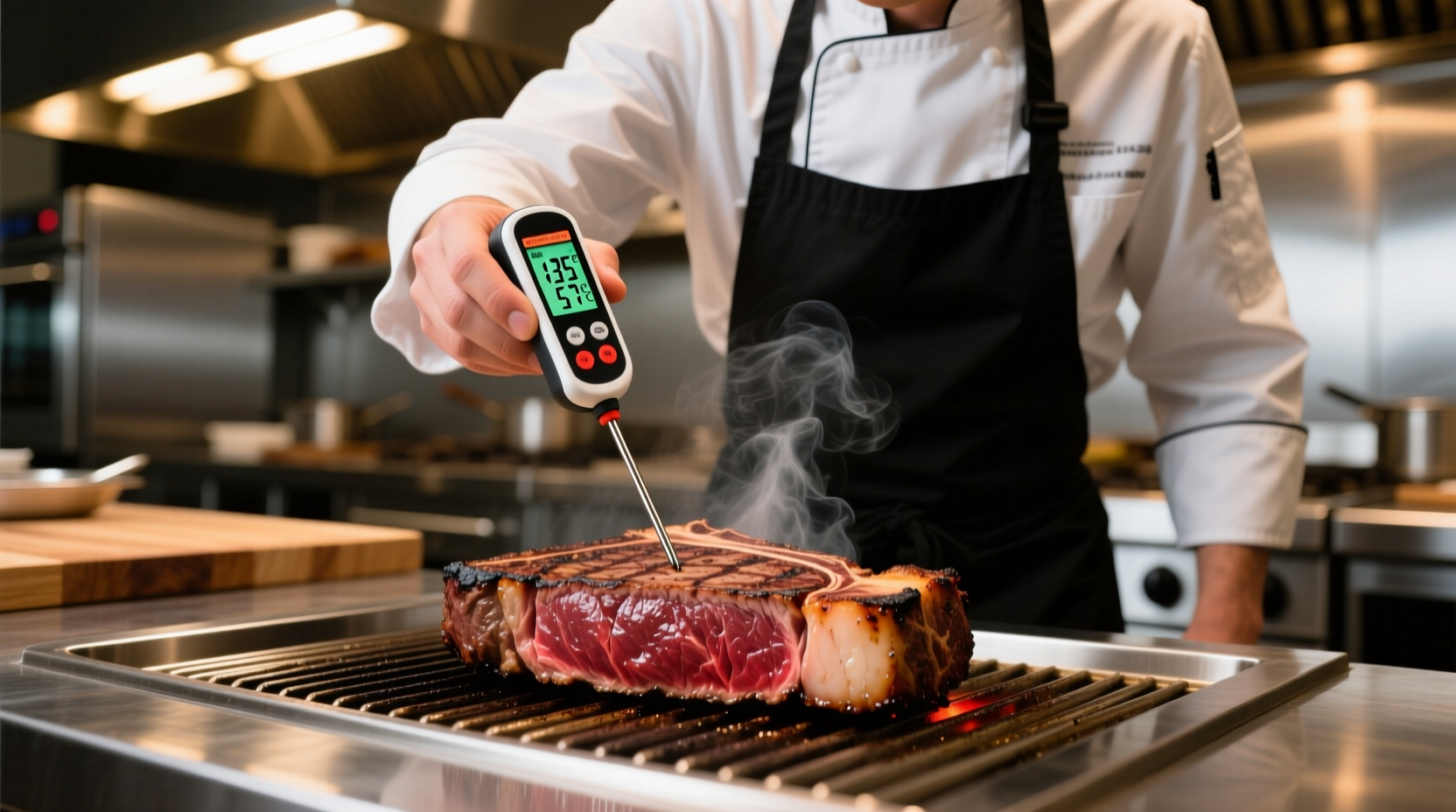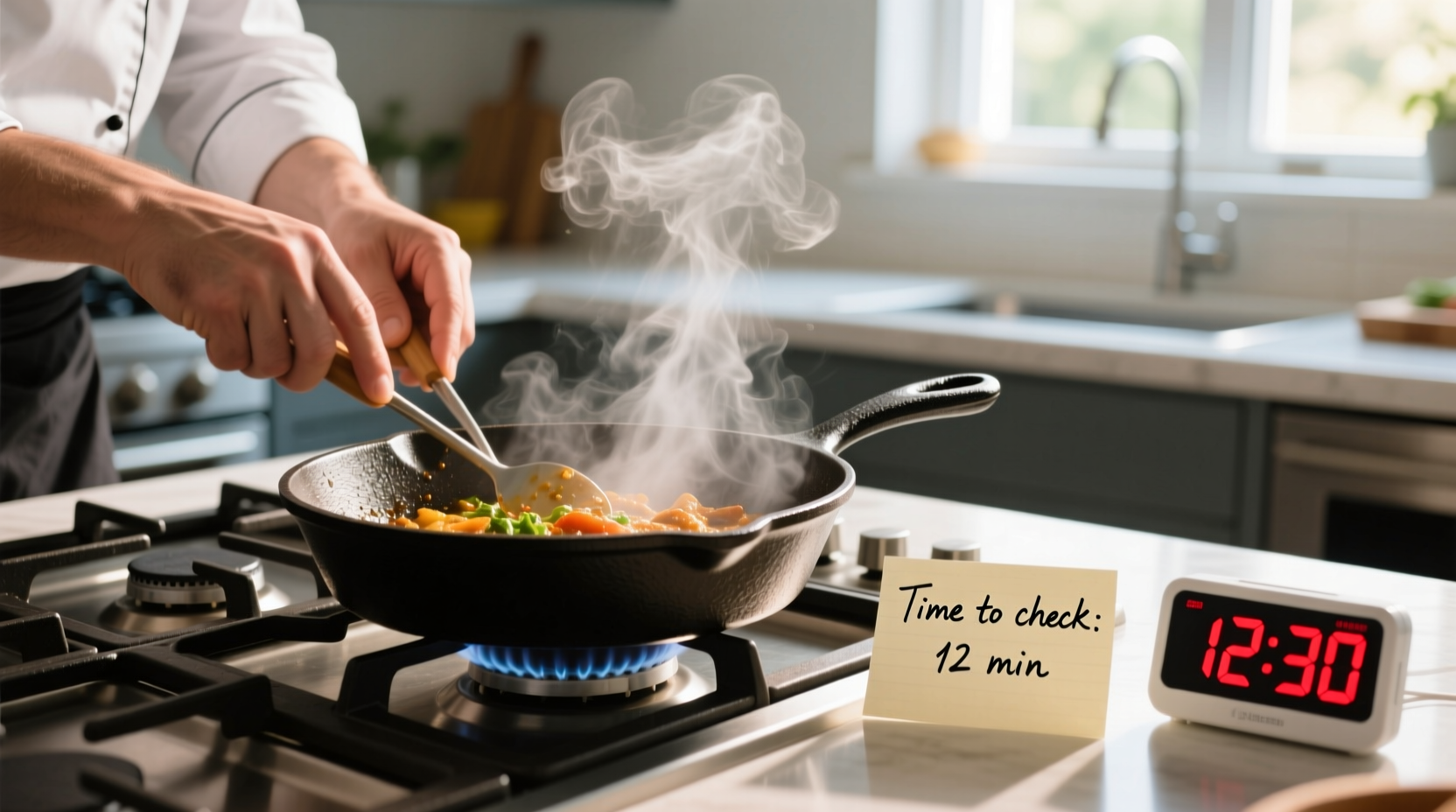Ever stared at your oven or stove wondering exactly how long to cook your meal? You're not alone. Millions search "how long do I cook" daily, but the frustrating truth is—there's no single answer. Cooking duration depends on five critical factors: food type, cooking method, portion size, equipment used, and desired doneness. This guide delivers the practical framework you need to determine perfect cooking times for any dish, backed by food science and professional chef techniques.
Why Your "How Long" Question Needs More Context
"How long do I cook" is like asking "how fast should I drive"—the answer depends entirely on your destination, vehicle, and road conditions. In cooking, three elements create variability:
| Factor | Impact on Cooking Time | Example |
|---|---|---|
| Food Density | Dense foods require longer cooking | 1-inch steak: 6-8 min vs. fish fillet: 3-4 min |
| Starting Temperature | Cold food needs 25% more time | Refrigerated chicken vs. room-temperature |
| Cooking Method | Direct heat cooks faster than indirect | Grilled vs. baked potatoes (25 vs 55 min) |
According to USDA Food Safety and Inspection Service research, nearly 40% of home cooking errors stem from relying solely on time rather than temperature verification (USDA FSIS, 2023). This explains why your "15-minute salmon recipe" sometimes yields dry results.
The Professional Chef's Time Verification System
Forget memorizing hundreds of cooking times. Master this three-step verification process used in professional kitchens:
- Estimate baseline time using food type and portion size
- Verify with multiple indicators (time + visual cues + temperature)
- Account for carryover cooking (food continues cooking after removal)
For example, when roasting chicken breasts:
- Baseline: 20-25 minutes at 400°F for 1-inch thick pieces
- Verification: Internal temperature reaches 165°F (74°C), juices run clear, meat resists pressure
- Carryover: Remove at 160°F (71°C) to account for 5-degree temperature rise during resting
Essential Cooking Time Reference Guide
Use these ranges as starting points, always verifying with thermometers. Times assume standard home kitchen equipment and room-temperature ingredients.
| Food Type | Stovetop (min) | Oven (min) | Safe Internal Temp |
|---|---|---|---|
| Chicken Breast (1") | 6-8 per side | 20-25 | 165°F (74°C) |
| Salmon Fillet (6oz) | 4-5 skin-side down | 12-15 | 125-130°F (52-54°C) |
| Ground Beef Patty (1/4 lb) | 3-4 per side | N/A | 160°F (71°C) |
| Broccoli Florets | 4-6 steamed | 15-20 roasted | N/A (crisp-tender) |
| Rice (white, 1 cup) | 15-18 simmering | N/A | N/A (water absorbed) |

Troubleshooting Common Timing Issues
Even with perfect timing estimates, variables affect results. Here's how professionals adjust:
When Food Cooks Too Fast
- Oven hot spots: Rotate pans halfway through cooking
- Overcrowded pan: Increases steam, slows browning (leave 1" between items)
- High-altitude adjustment: Above 3,000 ft, increase liquid by 2-4 Tbsp per cup and extend time 5-8% (USDA Altitude Guidelines)
When Food Isn't Cooking Through
- Temperature shock: Cold food in hot pan creates steam barrier—pat proteins dry
- Insufficient preheating: Oven needs 15-20 minutes to stabilize temperature
- Dense center issue: For large roasts, start low (275°F/135°C) then finish high
Pro Techniques for Perfect Timing Every Time
Professional kitchens use these time-tested methods that home cooks can easily adopt:
The 70% Rule for Large Cuts
For roasts over 3 pounds, remove from heat when internal temperature reaches 70% of target. The remaining rise happens during resting. Example: For medium-rare beef (135°F/57°C), remove at 95°F (35°C).
Carryover Cooking Calculator
Dense foods continue cooking after removal. Estimate rise based on size:
- Thin cuts (fish, chicken cutlets): 2-3°F (1-2°C)
- Medium cuts (steaks, chops): 5°F (3°C)
- Large roasts: 10-15°F (6-8°C)
Dual-Timer Method
Set two timers: one for minimum safe time, another for maximum recommended time. Check at minimum time, continue checking every 2 minutes until perfect.
When Time Isn't the Best Indicator
Some foods require sensory evaluation rather than strict timing:
- Pasta: Taste test 1 minute before package time
- Vegetables: Should be crisp-tender (pierce with fork but offer resistance)
- Sauces: Coat the back of a spoon ("nappé" stage)
Remember that cooking equipment varies significantly. A gas stove cooks differently than induction, and oven thermostats can be off by 25°F (14°C). Always calibrate your thermometer annually and verify oven temperature with an independent thermometer.
How do I know when meat is done without a thermometer?
Use the finger test: Press the fleshy part of your palm below the thumb. Raw feels like touching thumb to index finger. Rare matches thumb to middle finger. Medium is thumb to ring finger. Well-done resembles thumb to pinky. Also check juices—clear for poultry, slightly pink for beef.
Why does my recipe say "cook until golden brown" instead of giving time?
Color change indicates Maillard reaction completion, which varies by stove heat, pan material, and food moisture. Time-based instructions would be inaccurate since these variables affect browning speed more than cooking duration.
How much longer should I cook food at high altitude?
Above 3,000 feet, increase cooking time by 5-8% per 1,000 feet elevation. For boiling, add 1-2 minutes per 1,000 feet. Baking requires both time extension (5-15%) and temperature adjustment (increase 15-25°F).
Does carryover cooking happen with vegetables?
Yes, but minimally. Dense vegetables like potatoes experience 2-3°F (1-2°C) carryover. Delicate vegetables like asparagus have negligible carryover. Always remove vegetables from heat when slightly underdone to account for residual heat.











 浙公网安备
33010002000092号
浙公网安备
33010002000092号 浙B2-20120091-4
浙B2-20120091-4